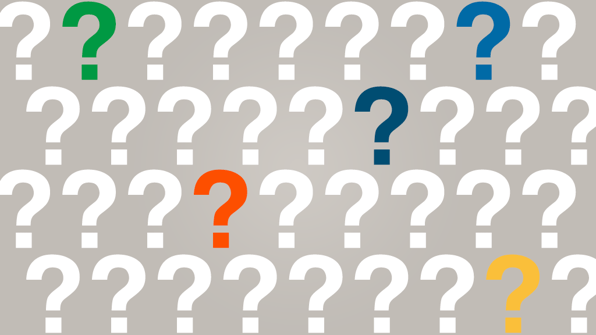Need More Customer Engagement? Answer These Five Questions First
Anyone can get customers.
Customer acquisition can be gamed by throwing money, hiring more sales people, even outright trickery.
Customer loyalty is a much harder game to win.
There aren't any hacks or fool-proof systems that will retain a customer or member for years to come.
(I guess you could hand out stacks of cash every time someone purchases. But good luck getting the CFO to sign off on that.)
No, the shortcuts in customer loyalty are few. If it were easy, you wouldn't be here, reading this.
So what can you do? Where do you even start?
Start by taking a close look at your customer experience - what happens before, during, and after a transaction.
Start by answering these five questions.
Some are easy, some will require some creativity. Regardless, they'll help you find the right path to put your customers on.
Five Questions to Shape Your Customer Experience
What do you promise the customer will experience with your brand?
Few companies do this. Often because their products or services just don't match expectations.
Which is how we wind up with 78% of the population not considering themselves brand loyal.
What are people getting for their money? Be specific (and honest).
If you don't want to focus on your product, look to other things people value.
Maybe your company supports good causes.
Maybe you're on-time and reliable.
Maybe you're just the cheapest option out there.
Whatever it is, own it, deliver it.
Then use #3 on this list to remind them what you did.
What can you add to the transaction that will show instant return?
This is where you can get creative. People make snap judgments, and they just handed over their money to you. Give them more than they bargained for.
It could be freebies. A discount on their next purchase. Even a personal thank you letter would work.
Have an onboarding process that funnels your customers into the best, possible experience they can offer.
This is one reason why associations offer member benefits, and why we encourage you to think like a membership organization. Justify their investment by giving some immediate value right off the bat.
How can you maintain communication with the customer?
When possible, never let a customer leave without some sort of connection. It doesn't have to be a full-fledged loyalty program, either.
An email newsletter will work, or even a Facebook like.
Just some way of maintaining their exposure to your brand.
What can you provide to the customer that will make them experts with your product or service?
Make sure customers don't just use your product or service, but that they see a clear ROI from it.
To do so, they need to have enough knowledge to maximize the value. This requires sharing what you know, and what other customers have learned.
If your product is a service (carpet cleaning or plumbing, for example), and you make them more knowledgeable about your services, they'll see you as a leading authority. That's important in areas where people would rather just pay someone else to deal with issues.
Share your knowledge with customers via the communications channel you captured them in, in question #3. Don't just use your communication channels for sales pitches.
Who is the most responsive or engaged?
Take a look at the people who respond to your communications, even if they're only offering feedback. Look closely at who's beginning to come back again and again. What are the commonalities? What are the similar threads among them?
This is your ideal customer. They're the ones who will derive the most value from your product or service at the lowest cost. Because they get it - the have a need, they recognize you fit that need at the right price, and they'll return when that need arises again.
They may or may not be your highest-paying customers, but they're probably your most profitable. And not just because they "get it," but also because they're referring people to you.
Once you've identified who these people are, bend your business to speak their language and meet their needs. There's a lot of them out there, and they're looking for you.
How Are You Different?
 Most brand experiences are adequate.
Most brand experiences are adequate.
Think about the brand interactions you have each day.
Very few are stellar. Very few piss you off.
Most are just…okay.
Which is okay, but people forget okay.
There's room for different thinking. Remember - there's no formula for engagement and loyalty.
While pondering the above questions, think about how you can be different from the crowd.
Try answering those questions from the viewpoint of your closest competitor. Are your answers too close?
Don’t be afraid to be different, or go against what everyone else in your industry does. Which means the first answer that pops in your head for those questions may not be the best answer.
Don't be afraid to try new things or zig where others zag.
No company has ever suffered from trying to engage their customers in a more dialed-in and honest way.
It still won't be easy. But it's your best path to serious profitability.
(images courtesy of Mary, David Bleasdale)
Topics: Customer Engagement
Written by: Brandon Carter






.jpeg)







Share your Comment.